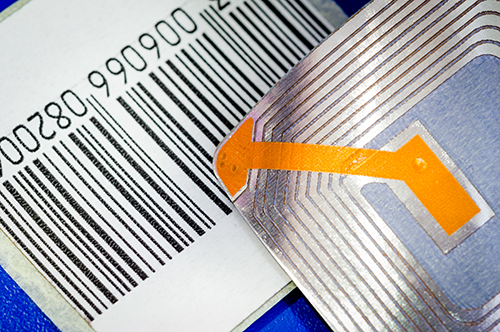5 Ways Asset Tracking Improves Safety for Manufacturers
Note: The following blog has been updated from a previous version to incorporate new information and align messaging with the latest industry best practices.
Manufacturing, especially metal manufacturing, can be dangerous.
Flammable and explosive materials, powerful machines, and heavy materials create hazards workers must navigate safely. Chemicals, extreme heat, welding dangers, crushing hazards, material stress, and worse are additional risks. Dangerous materials like dehydrated sodium hydroxide and hydrochloric acid are present in the work area
It is up to all of us to minimize risk and improve safety for manufacturing employees.
Following OSHA rules and guidelines can reduce risk in the workplace, but additional steps can further reduce the danger to employees. That’s why more and more manufacturers are implementing new technology and better asset-tracking tools and protocols. With the right system in place, employees can improve productivity without increasing risk.
A Look at Modern Asset Tracking Techniques
Asset tracking is an essential component of manufacturing. It is vital to maintaining accurate inventory, enables just-in-time deliveries, and increases the ability of the company to respond to problems and production needs.
In the past, asset tracking was a manual process. An asset tracking protocol could be as simple as an employee with a clipboard, spreadsheet, pen, and a piece of chalk walking the production floor. This manual process was expensive and error-prone and resulted in suspect data that was more guesswork than reality.
Today, manufacturers are using tools and technology like barcode scanners, RFID, and labels that withstand extreme applications to eliminate manual data collection. This provides better data, more visibility of assets, and better control of production – which increase the safety of employees and allow the manufacturer to work better, faster, and with fewer errors.
5 Safety Benefits with Better Asset Tracking
The right asset-tracking system enables a safer work environment. Consider the following benefits:
- Limit exposure to hazardous materials.
Reducing employee exposure to hazardous materials will reduce the potential dangers that increase risk. In the past, asset tracking might mean an employee was perilously close to dangerous materials. Not collecting the data meant a gap in production visibility. Today, with extreme application products like HOT! Labels, there’s no need to manually track hazardous assets. The right technology can keep the employee safe and provide the data you need.
- Flag material warnings and PPE requirements to assets.
With greater visibility and more real-time production information, you can better track information, like warnings, on your assets. You can also link PPE requirements for an asset in the tracking system, depending on the system and solution you use. By linking a physical asset with information, notifications can be automated. Employees have instant access to critical information via a notification before a violation or dangerous situation occurs.
- Better tracking and control of hazardous materials.
In the past, a piece of chalk or a simple tag might be the only method a manufacturer had for tracking hazardous materials. This could lead to mistakes, or missing materials when a chalk line was accidentally rubbed off or a tag was lost. Today, you can use tags and labels designed for the material, eliminating problems like a lost tag or smudged chalk. Fewer mistakes mean better control of hazardous materials and lower risk for employees.
- Link assets to employee training.
Proper training is vital to a safe work environment, especially for manufacturers and metals manufacturers, but training can only be effective if employees utilize it. With modern asset tracking solutions, you can link certain materials – physical assets – to the required training protocol, so that an employee will know what materials and equipment they can use. The label or asset tracking system can include information on required training. This provides an additional level of administrative control, so no employee will be left to work on equipment they haven’t been trained on.
- Reduce overall inventory.
Asset tracking can help locate lost or missing assets and equipment. With the right system, you can better track use. Maintenance and repair records are better linked to the physical assets. You can automatically flag low inventory levels. A strong inventory system, supported by barcode or RFID asset tracking, can reduce overall inventory and enable just in time shipments that ensure rapid production without high inventory levels that increase costs and can create dangerous situations.
Getting Started with Modern Asset Tracking
While there are a wealth of benefits with modern asset tracking – benefits that are within reach – many manufacturers continue to hold off on updating their system. They continue to use dated, inefficient manual tracking methods because they know it works.
There has never been a better time to implement modern asset tracking. New technology, like the GO2 HOT! labels line and RFID chips with increased memory, provide manufacturers greater capabilities.
We suggest contacting an expert in material ID and asset tracking to evaluate your process and production requirements. They can suggest the right technology for your needs and provide critical expertise at the beginning of the project. Start small, with an initial test run. Develop best practices before rolling it out to the rest of your business.
With the right partner and the right tools, getting started is easier than you think.
Share this
You May Also Like
These Related Stories

Guide to RFID Technology for Manufacturing

How to Increase Production Efficiency for Steel and Metals Manufacturing

